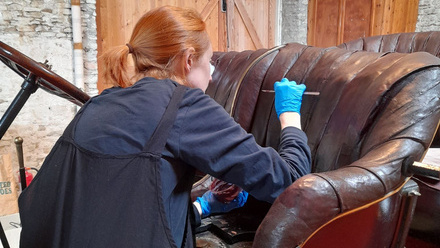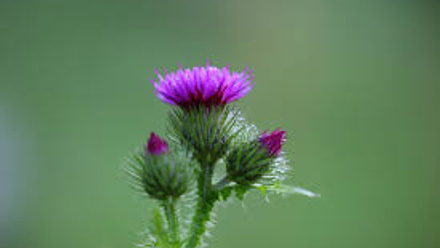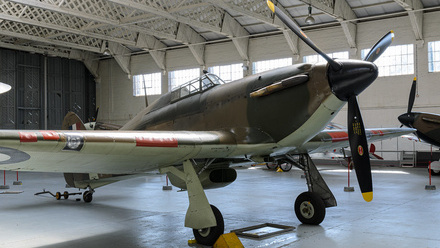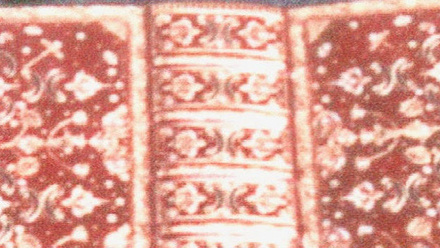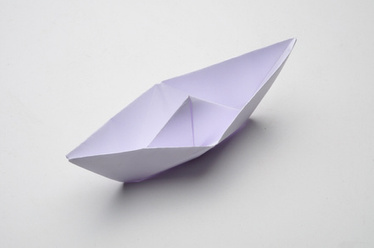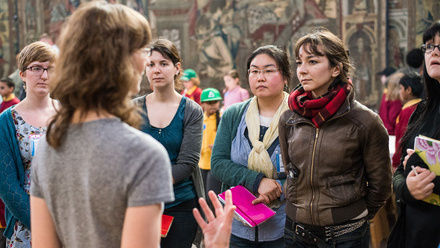|
Accreditation |
A professional qualification, administered by Icon. It demonstrates to clients, employers and peers that an individual has an in-depth knowledge of conservation, a high degree of competence, sound judgement and a deep understanding of the principles which underpin their practice, by showing that they are proficient across Icon’s professional standards in conservation. |
|
ACR |
Accredited Conservator-Restorer |
|
Action |
The term ‘conservation action’ is used rather than ‘treatment’ to include all the activities that a conservator may carry out in relation to objects/items, from interventive treatment to preventive measures, documentation, training, research, and advice for future care. |
|
Adaptation |
Changing an object to suit the existing use or a proposed use. |
| Advocacy |
Advocacy is a deliberate process of persuasive communication that seeks to build momentum and support behind an idea. It is a relatively slow process of changing attitudes and positions that requires ongoing engagement and negotiation with stakeholders. |
|
Alteration |
Change in condition, beneficial or not, intentional, or not. |
|
Analysis |
A detailed examination of the elements or structure of a substance |
|
Architectural conservation |
The process through which the material, historical, and design integrity of built heritage are prolonged through carefully planned interventions. |
|
Causes of deterioration
|
Causes of physical and chemical damage, which may occur catastrophically (as a one-off accident or emergency) or cumulatively (over time). These causes are commonly classified as
These causes can act alone or in combination causing synergistic effects such as the wrong RH causing mould. They may be found in the environment surrounding the item but may also result from the physical or chemical instability or incompatibility of the materials and/or structures of which an item is made. |
|
CCCTD |
Conservation & Collections Care Technicians Diploma |
|
Collection |
Group of objects/items having shared or combined significance Note: The term “collection” is mainly used within “movable cultural heritage”. In the context of immovable cultural heritage other terms are used, e.g. ‘historic ensemble’, ‘historic site’, ‘conservation area’, ‘historic garden’. |
|
Compatibility |
Capable of being used in combination with |
|
Condition |
Physical state of an object/item at a particular time. Note: Assessment of the state of an object depends on the context and thus on the reason why the assessment is being made. |
|
Condition report |
Record of condition of an object/item for a specific purpose, dated and authored. |
|
Conservation |
An approach to objects/items, which aims to preserve and enhance those objects/items for the purposes of public access and understanding. Conservation encompasses many different actions including investigation, documentation, cleaning, stabilisation, and long-term preservation to manage change over time. Conservation is concerned with the layers of significance objects/items have acquired over time rather than with repair to a projected former or ‘as new state’. |
|
Conservation plan |
A document, which outlines the significance of an historic object and describes how any activities such as conservation processes or maintenance can be developed and managed appropriately and without diminishing the object’s significance. A conservation plan for an individual object should not be confused with an overall ‘Collections Care and Conservation Plan’. |
|
Context |
Any relationship between an object/item, place, and other places, relevant to the values of that place. |
|
Code of Conduct |
Icon’s Professional Standards and Code of Conduct set out what is expected of a Member of the Institute. The Code of Conduct stipulates what constitutes professional behaviour. In situations where there is a dispute, the Code allows both parties to see clearly whether the principles of the Code have been met or not. |
|
Cultural heritage |
Inherited assets, tangible and intangible which people identify and value as a reflection and expression of their evolving knowledge, beliefs, and traditions, and of their understanding of the beliefs and traditions of others. |
|
Detectable |
The degree to which an intervention on an object/item can be noticed or observed, as appropriate to its context and use. |
|
Deterioration |
Gradual change in condition that reduces significance or stability. Note 1: This term can also refer to the process itself. Note 2: The term “decay” is sometimes used as a synonym. |
|
Diagnosis |
The process of identifying the present condition of an object and determining the nature and causes of any change, as well as the conclusions drawn. Note: Diagnosis is based on observation, investigation, historical analysis, etc. |
|
Documentation |
The information about the object. This may be in the form of an archive of documents and images but can also be passed in information makers/private owners/past repairers tell you. It is important to record this information as part of the documentation of the object. The process of creating documents to record the state of an object and any conservation actions, which have been applied to it. Documentation may consist of written descriptions, diagrams, drawings, photographs, scans, and results of analytical research. The documentation of conservation actions should include guidance about the housing, handling, use, and long-term care of the object. For example, X-radiographs, drawings, photographs, written reports, computer files, photogrammetry, laser-scanning, etc. Note: This term can also refer to the process itself. |
|
Documentation standards |
The format and detail required for documentation, set out in industry standards (See https://icon.org.uk/icon-resources/conservation-standards) and by those commissioning conservation. |
|
Environment |
Surroundings of an object/item, some aspects of which may affect its condition. Note: Such aspects could be of human, physical, chemical, biological, or climatic origin. |
|
Environmental sustainability |
The quality of causing little or no damage to the environment |
|
Heritage science |
The scientific endeavour benefiting the conservation, management and interpretation of cultural heritage. |
|
HEF |
Historic Environment Forum |
|
HLF |
Heritage Lottery Fund (Changed to NLHF in January 2019) |
|
IIC |
International Institute for Conservation of Historic and Artistic Works |
|
Intangible |
The practices, representations, expressions, knowledge, skills – as well as the instruments, objects/items, artefacts and cultural spaces associated therewith – that communities, groups and, in some cases, individuals recognize as part of their cultural heritage…..[it] is manifested inter alia in the following domains:
|
|
Internship |
A structured work- based placement offering emerging professionals an invaluable opportunity to develop their careers, engage with professional networks and develop practical knowledge by learning from highly experienced conservation professionals. |
|
Interventive |
Any action, which has a physical effect on the nature of an object. |
|
Investigation |
Gathering of all information necessary for a conservation decision making process. Note 1: This should include both qualitative and quantitative information. Note 2: Non-destructive techniques are preferred in compliance with the ethical principles (least intervention possible), and where intervention is needed, e.g. in taking samples, the least amount of material that is necessary to produce a reliable result should be taken, following standards for sampling (e.g. BSI, Icon). |
|
Item |
A thing or unit. |
|
JIC |
Journal of the Institute of Conservation (Icon) |
|
Least means possible |
Sometimes called ‘minimum intervention’, achieving a desired outcome by the option that involves the least disturbance of original materials. |
|
Maintenance |
Undertake measures to an object/item and/or its environment to manage the agents of deterioration and keep its condition as stable as its current condition and composition allow. |
|
Materials –tested /compatible |
Substances used in conserving cultural heritage that have physical properties that are known, understood, and proven by testing to be safe for use with the cultural heritage object/item. |
|
NLHF |
National Lottery Heritage Fund (formerly HLF) |
|
NCCR |
National Council for Conservation Restoration |
|
NHSF |
National Heritage Science Forum |
|
Object/Item |
The term “object” as used for cultural heritage, both immovable and movable. In specific professional contexts, other terms are used: e.g. “artefact”, “cultural property”, “item”, “ensemble”, “site”, “building”, “fabric”. |
|
PARN |
Professional Associations Research Network |
|
Pathway |
A dedicated Icon membership category open to all conservators working towards becoming an Accredited Member of Icon. |
| Policy |
Policy work is a targeted, solution-based activity in which the causes of a problem or issue are analysed, and policy-based solutions are communicated to decisionmakers to address them in a manner that creates favourable change. Efforts will typically try to establish new policies, improve existing policies or challenge the development of unfavourable policies. |
|
Preservation |
Maintaining an object in its existing state and retarding deterioration. Preservation is the art of ‘keeping safe’, ‘maintaining’, and ‘retaining’. |
|
Preservation policy |
Sets out an organisation’s or an individual’s approach to preservation, addressing the questions of what needs to be preserved, why, for what purpose, and for how long. |
|
Preventive conservation |
All conservation activities designed and applied indirectly to an object to prevent or minimise future damage or deterioration or decay. Examples are environmental control and pest management. |
|
Professional Standards |
Icon’s Professional Standards and Code of Conduct set out what is expected of a Member of the Institute. The Professional Standards guide the professional practice of conservators. |
|
PSD |
Professional Standards and Development committee (Icon) |
|
Rationale |
A set of reasons or a logical basis for a course of action. |
|
Remedial conservation |
Actions applied directly to an object to arrest deterioration and/or to limit damage. |
|
Repair |
Repair means all actions designed and applied directly to an object aiming to recover its form or its function. |
|
Restoration |
Actions to return an object to a former state to facilitate its appreciation, understanding and/or use. This may be by removal of later additions or by the recreation of missing parts (from re-touching areas of loss to making facsimile parts). In conservation, restoration should be based on sound evidence and understanding of significance and the materials and techniques used. |
|
Re-treatable |
Capable of further and effective conservation action being possible. |
|
Reversibility |
Capable of being reversed so that the previous state is restored. |
|
Scientific analysis |
Investigation according to rules laid down in exact science for performing observations and testing the soundness of conclusions. |
|
Significance |
Aesthetic, historic, scientific, social, or spiritual value for past, present, or future generations. Cultural significance is embodied in the object itself, its fabric, setting, use, associations, meanings, records, related places, and related objects. Objects/items may have a range of values for different individuals or groups. Note: May be ‘tangible’ and/or ‘intangible’. |
|
Significance statement |
A document that includes the opinions of all those consulted and provides details of the research methodology followed to assess the significance of an object. |
|
Special Interest Group(s) (commonly written as Group) |
Groups of Icon members that bring conservators into contact with others who share their interests. Each Group is dedicated to a different branch of the profession and has a committee, which organises events, training and networking opportunities. |
|
Specialist |
A person who is trained in a branch of a profession. |
|
Stabilisation |
Stabilisation of an object means all activities necessary to temporarily halt decay without extending beyond the minimum intervention required. |
|
Stakeholder
|
An individual, group, or organisation that has an interest in the object and actions associated with it, whether a private citizen, local community, institution, or statutory body. They may be affected directly by conservation as a user, customer or client, giver of grants or statutory permissions; or indirectly e.g. as a resident in or descendant of a community where the object is or was located or created. |
|
Sustainability |
The quality of being able to continue over a period of time. |
|
Tangible |
Perceptible to touch. Definite, clearly intelligible. |
|
TAR |
Trustees Annual Report (Icon) |
|
Testing |
A means of experimenting or investigating and analysing |
|
Treatment |
A conservation intervention that involves action carried out on an object. Note: Treatment is one of the possible interventions for conservation. |
|
Treatment record |
Part of documentation, comprising a record that describes a conservation treatment carried out on an object in detail, describing the decision-making process, the methods and materials used. Graphic and photographic records can be used to illustrate the condition of the object before, during and after treatment. |
|
Use |
All ‘heritage objects’ are assumed to have use, whether or not that is their original function, i.e. an archaeological cooking pot is not used for cooking food, but still has use as an object of study. However, some objects/items, for example, clocks, bookbindings, vehicles, may still be required to carry out their original mechanical functions in order to be accessed and appreciated. Use may also be an important part of preserving traditional practices, skills, and experiences around the object. |
|
Values |
Aspects of importance that individuals or a society assign(s) to an object. Values can be of different types, for example, artistic, symbolic, historical, social, economic, scientific, technological, etc. The assigned value can change according to circumstance, for example, how the judgement is made, the context and the moment in time. Value should always be indicated by its qualifying type. |
|
Working life |
The period for which an object or a treatment, whether remedial, preventive, or maintenance, is designed to last. |
This Glossary has been created with reference to:
- https://abtemguidelinesorg.files.wordpress.com/2018/02/124317-abtem-guidelines-booklet.pdf [April 2020]
- BS EN 16853:2017
- BS EN 15898:2011
- https://historicengland.org.uk/advice/hpg/hpr-definitions/#cat_H_word_Definition: Heritage Value(s) [April 2020]
- Oxford English Dictionary, Clarendon Press 1995
- Article 2 of the Convention for the Safeguarding of the Intangible Cultural Heritage (adopted by UNESCO in October 2003 https://ich.unesco.org/en/convention
- The National Trust Manual of Housekeeping, The National Trust 2006

